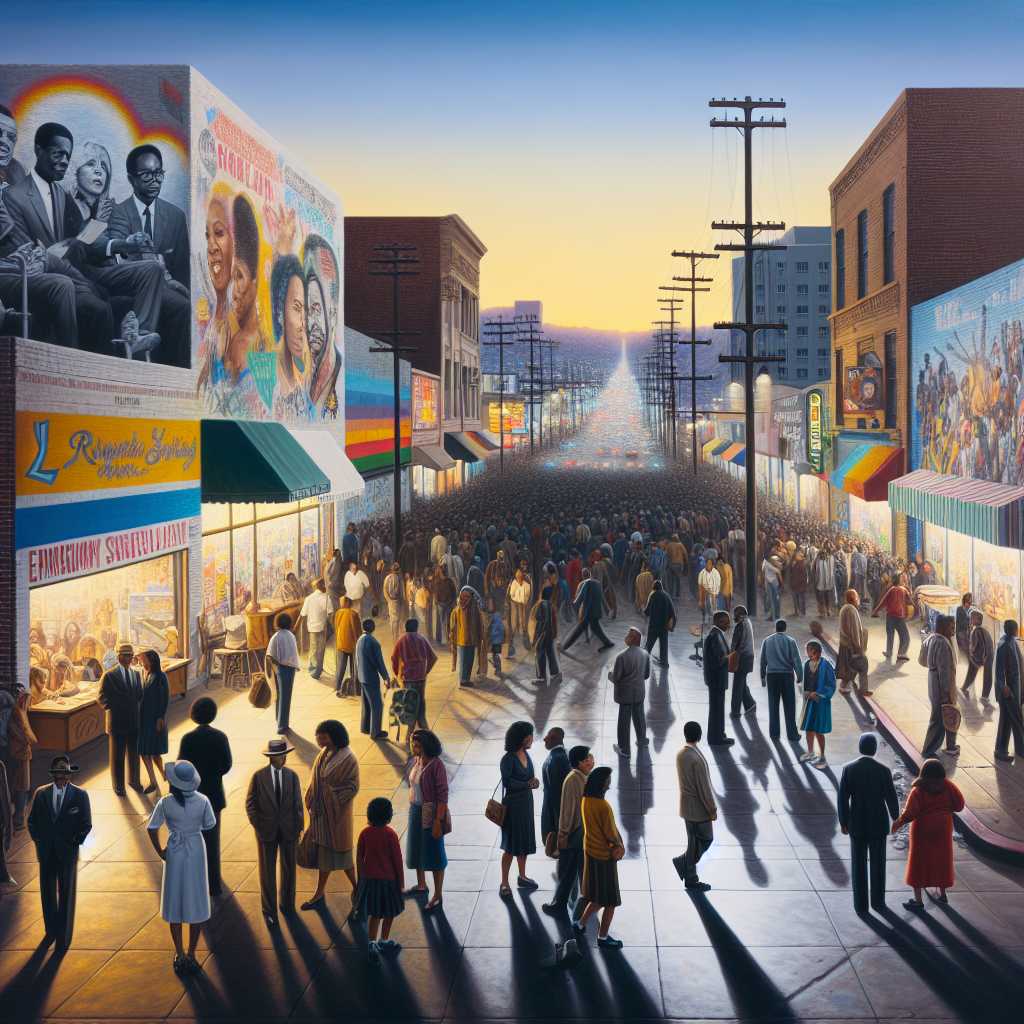Example Article
Historical Context and Origins of the LA Riots
The LA Riots, also known as the 1992 Los Angeles Uprising, remain one of the most significant civil disturbances in American history. Triggered by the acquittal of four LAPD officers caught on videotape brutally beating Rodney King, an African American motorist, the riots laid bare long-standing racial tensions and systemic inequalities within Los Angeles and beyond. The city had been simmering with unrest for decades, shaped by economic disparities, racial segregation, and police brutality.
The immediate spark for the riots was the verdict, but the underlying causes traced back to decades of marginalisation in South Central Los Angeles and other predominantly minority neighbourhoods. Unemployment rates were high, educational opportunities scarce, and distrust in law enforcement widespread. These factors created a tinderbox situation where one incident could ignite widespread violence and chaos.
Understanding the historical context is crucial to appreciating why the riots were not merely spontaneous acts of violence but rather a collective outcry against entrenched social injustice. The response from authorities, community leaders, and activists shaped subsequent policies on policing and urban development.
Economic and Social Aftermath: Rebuilding a Fractured City
The aftermath of the LA Riots saw considerable destruction: over 2,000 buildings were damaged or destroyed, thousands were injured, and more than 50 lives were lost. The economic impact was staggering with damages estimated at over $1 billion. However, beyond just physical reconstruction, the city faced a daunting task of social healing and economic recovery.
Rebuilding efforts included government grants aimed at revitalising affected neighbourhoods and supporting small businesses devastated by looting and arson. Yet, many residents felt these measures were insufficient or unevenly distributed. The riots exposed deep fractures not only in infrastructure but also in community trust towards public institutions.
In response, various grassroots organisations emerged to advocate for equitable urban redevelopment and to foster dialogue between different ethnic communities. These initiatives highlighted how rebuilding went beyond bricks and mortar—it required rebuilding relationships between citizens, law enforcement, and policymakers to prevent future unrest.
Cultural Reflections and Media Representation
The LA Riots profoundly influenced cultural expressions across multiple mediums including film, music, literature, and visual arts. Artists used their platforms to explore themes of racial injustice, identity, resilience, and systemic failure. This cultural output helped frame public understanding of the riots beyond sensational headlines.
Films like ‘Boyz n the Hood’ and documentaries such as ‘LA 92’ provided nuanced perspectives by highlighting personal stories amidst chaos. Similarly, musicians from hip-hop to punk rock incorporated references to the riots in their lyrics to bring attention to ongoing social struggles.
Media portrayal at the time was often criticised for focusing disproportionately on violence rather than underlying issues. Contemporary retrospectives have sought to correct this narrative imbalance by emphasising systemic racism as a root cause rather than reducing the events to mere lawlessness.
Policing Reforms and Lessons Learned
One of the most enduring legacies of the LA Riots has been its influence on policing reforms both locally in Los Angeles and nationally across the United States. The public outcry led to increased scrutiny of police practices including use-of-force policies, accountability mechanisms, and community policing initiatives.
The LAPD underwent significant structural changes such as appointing civilian oversight bodies like the Office of Inspector General to monitor misconduct claims. Training programs were revised to emphasise de-escalation techniques and cultural competency. Despite these efforts, challenges remain as recent incidents demonstrate ongoing tensions between law enforcement agencies and minority communities.
The lessons learned from 1992 underscore that meaningful reform requires sustained commitment from all stakeholders—government officials, police leadership, community groups—to build trust through transparency and accountability.
Conclusion: The LA Riots as a Catalyst for Change
More than three decades later, the LA Riots continue to resonate as a powerful reminder of what can happen when systemic inequities are ignored. While they resulted in tragic loss and devastation, they also acted as a catalyst for conversations about race relations, justice reform, and urban policy.
The riots forced institutions to confront uncomfortable truths about inequality embedded within societal structures. They inspired new generations of activists committed to social justice who draw lessons from both successes and failures since 1992. Today’s discussions around policing reform and racial equity owe much to this watershed moment.
Ultimately, understanding the multifaceted legacy of the LA Riots helps inform ongoing efforts towards building more inclusive communities where grievances are addressed constructively before they escalate into conflict.
Notes
- The 1992 LA Riots lasted six days resulting in over 50 deaths.
- Economic damages from the riots exceeded $1 billion.
- Post-riot reforms led to establishment of civilian oversight bodies for LAPD.

